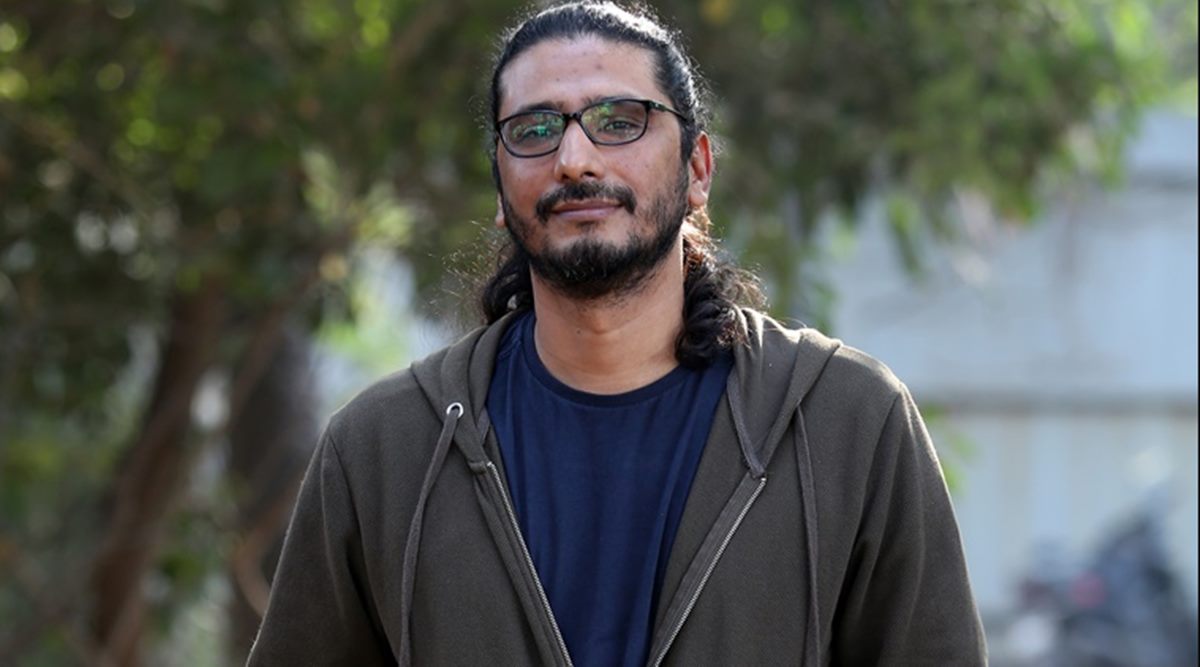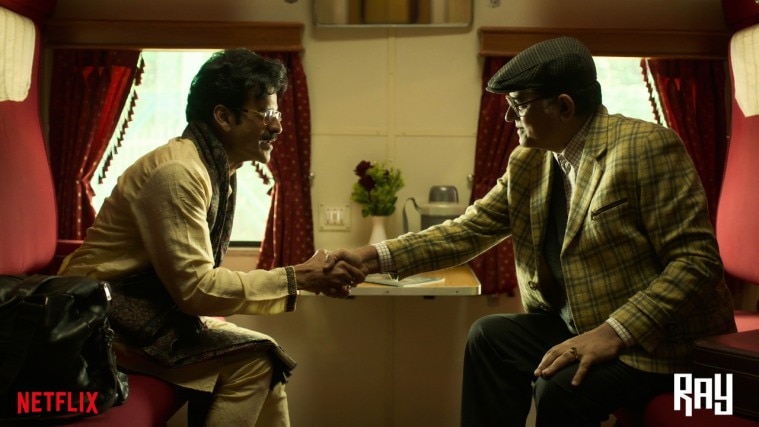Hungama Hai Kyun Barpa, Abhishek Chaubey's chamber piece about a journey through life starring Manoj Bajpayee and Gajraj Rao, is part of an anthology of four stories to celebrate Ray in his centenary year.
Two strangers pouring their hearts out to each other is a thing of the past, says director Abhishek Chaubey, certain his nostalgic adaptation of a Satyajit Ray story about two men meeting in a train compartment could possibly not take place in the mobile era.
Hungama Hai Kyun Barpa, Chaubey’s chamber piece about a journey through life starring Manoj Bajpayee and Gajraj Rao, is part of an anthology of four stories to celebrate Ray in his centenary year.
While Ray had set Barin Bhowmick’s Ailment in the 60s and the 70s, Chaubey and writer Niren Bhatt decided to move the story out of Bengal to the world of ghazal singing in the 80s and 90s, just before mobile phones became an inseparable part of life.
“If I were to set the film in contemporary times, two people would not even talk to each other because they will be talking to somebody else on their mobile phones. If I can talk to my girlfriend, why do I need to talk to the stranger next to me? The world is invariably moving in that kind of situation where two strangers talking to each other, pouring their heart out is a thing of the past,” Chaubey told PTI in an interview.
The title, Hungama Hai Kyun Barpa, is inspired by the popular Ghulam Ali ghazal that features prominently in the 54-minute movie. Bajpayee plays ghazal singer Musafir Ali who was a kleptomaniac in the past. During the course of a train journey, he meets Gajraj Rao’s wrestler turned sports journalist Aslam Beig. He remembers swiping Beig’s favourite watch years ago and is filled with guilt.
Chaubey, the director of films such as Ishqiya, Dedh Ishqiya, Udta Punjab and Sonchiriya, said he was initially approached by Sayantan Mukherjee, the showrunner, and Lalit Sharma, the producer, with a proposal to adapt another story. But he zeroed in on this one.
“I really love this story for the simple reason that I thought it would make a very heartwarming and extremely funny film. There are certain things that Ray does in his short stories — there is always a psychological exploration of the primary character but most of the stories that he wrote either had some supernatural, science fiction, or some surreal element to it. In Barin Bhowmick…, while the psychological exploration is there, the story is also a comedy about manners,” he said.
While Chaubey did not want to deviate from the original text, he had to bring in certain changes, like making Bajpayee’s character a ghazal singer rather than a nazrul singer, changing the first person narrative to accommodate more dialogue, and search for an exotic replacement for the black tea that figures often in the story.
Research threw up ‘chai noomi basra’ (dried lime tea), which is integral to Ali remembering his first encounter with Beig.
“The story gave me a chance to move between realism and magic because it is from Musafir’s point of view and part of the story resides in his head. While writing I did not know that Manoj Bajpayee and Gajraj Rao will star in it but I knew that it gave me a chance to cast two brilliant actors and watch them play off each other.”
Both Bajpayee and Rao have known each other since their theatre days in Delhi and the director used their easy equation for the benefit of the story.
Chaubey took the exact dimensions of a train coach and recreated it in the verandah of his office in Mumbai for the two actors to rehearse.
“By the time we were on the set, these guys knew absolutely what they were going to do. And we could then just have fun with it because we had solved the bigger problems. And both of them really were excited about the film. Manoj kind of learned how to play the harmonium, especially the song that he performs in the film. Everybody was just happy to be on the set and raring to go”.
The pandemic had a huge role to play in the way the story was set, which operates like a chamber piece. If it were non-Covid times, Chaubey, a stickler for real-locations, said he would probably have shot the film in an actual train. Did trains and the nostalgia surrounding them have something to do with him choosing to adapt this particular story? Trains, Chaubey replied, hark back to the master himself. Ray was quite fond of trains, which make an appearance in his first film Pather Panchali and in the Feluda novel Sonar Kella.
“All films and all stories are literally a journey. It is what a protagonist goes through during the course of the story. In that sense, a train journey is a metaphor and that metaphor is there in this story also plus there is an element of the period in the story. The ghazal, which is a blockbuster hit, also contributes to that sense of nostalgia.
“When I was growing up, middle-class families would only travel in trains and it evokes certain emotions in them. The train is a great setting for any story and Ray also used to love it.”
The film was structured to be fluid. A key scene, which shows Bajpayee’s transition from a nobody to a successful ghazal singer, was shot in one take to evoke the sense of movement from past to present and from dream to reality. Chaubey said his director of photography Anuj Rakesh Dhawan and production designer Aditya Kanwar helped create “the musical stage and fluid transitions” in the movie.
Asked whether this will lead him to explore more comedies and other stories in the OTT space, Chaubey said he does not want the success or failure of any of his work to determine what he chooses to pursue next.
“Like any filmmaker, my mind has mapped my progression as an artiste on a subconscious level. But I don’t want immediate circumstances to affect me too much. I wanted to do a comedy when this film arrived in my life but that had to do with doing two very intense films in ‘Udta…’ and ‘Sonchiriya’ I just wanted to change my pace a little bit.”
Source: Read Full Article



